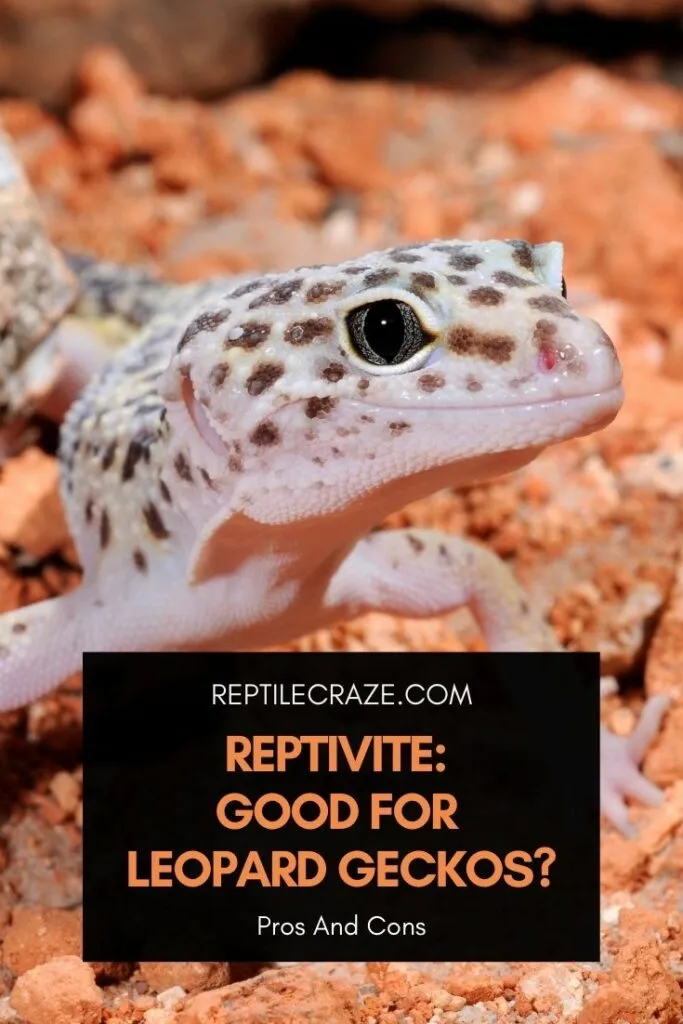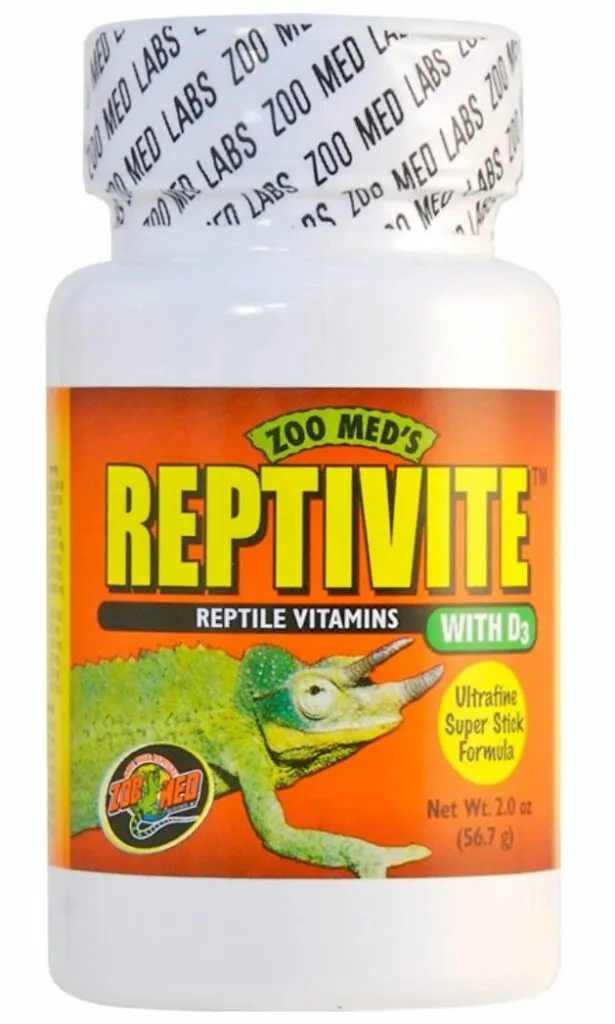
Reptivite is one of the popular calcium supplements for leopard geckos. However, a lot of people are thinking that this may not be good for leos as it was originally formulated for turtles who have softshell problems. Is Reptivite good for leopard geckos?
Reptivite is good for leopard geckos. It has a 2:1 calcium to phosphorus ratio. It also has the complete amino acid complex and Vitamin A. Even if it was formulated for turtles, it can still be used on leopard geckos to support their bone growth.
If you are still wondering if Reptivite can be dusted on your leo’s feeders, then this article is for you! We will discuss what Reptivite has to offer as well as the ideal use of this supplement with regard to using the one with Vitamin D3. So read on!
Table of Contents
What Is Reptivite?
Reptivite is a calcium powder supplement from Zoo Med. It may not be your all-around vitamin supplement for your leopard gecko, but it still has other components like Vitamin A and amino acids that will benefit the health of your leo.
Here are the other notable ingredients in Reptivite:
- Potassium (1.7% per 17,261 mg.)
- Magnesium (0.26% per 2,670 mg.)
- Iron (450 PPM per 450 mg.)
- Vitamin E (1000 IU per 220 IU)
- Vitamin K (20.43 mg. per 45 mg.)
- Niacin (303.9 mg. per 670 mg.)
- Biotin (12.2 mg. per 27 mg.)
- Folic Acid (48.5 mg per 107 mg.)
The good thing is, unlike other calcium powders, Reptivite does not contain any fillers like soy, sucrose, or yeast. It comes in two variants, one with Vitamin D3 and the other, without Vitamin D3.
Keep in mind that the variant that you choose depends on the current setup and condition of your leopard gecko.
If you rely heavily on UVB lights, then Vitamin D3 may not be needed as the lights are enough to process the calcium in your leo’s body.
There are also cases when there can be redundancy in terms of vitamins and minerals. Just to be sure, you can check out our vitamin guide to know which vitamins work well with other ingredients.
How Often Should I Give My Leopard Gecko Reptivite?
The general rule of use for both variants of Reptivite is to only dust your feeders with this once a week. You can get away with two dustings per week, but three is considered excessive.
The feeding schedule can also vary when you alternate using the one with Vitamin D3 and if you use UVB lights in your enclosure.
Keep in mind that Vitamin D3 is essential for the absorption of calcium and phosphorus in your leo’s body.
At the same time, too much Vitamin D3 can be toxic to them. You can read our calcium guide to know more about using calcium powder supplements and how you can achieve balance when using Vitamin D3.
So for example, if you dusted your feeders with Reptivite without Vitamin D3, you should not dust them with Reptivite that has D3 (given that you do not use other powders that contain D3) in the same week as it is considered to be double dusting already.
It is better to dust your feeders with Reptivite with Vitamin D3 the next week.
Again, the alternate feeding of the one with D3 and the one without depends on the setup of your enclosure (consistent use of UVB lights or use of heat mat) as well as the other powders that you dust on your feeders, if any.
What Are The Pros Of Using Reptivite?
Some owners have noted that it sticks really well on crickets, even if it is just a light dusting. Even if there is no water involved, it can coat the cricket quite easily.
It is also one of the brands that vets recommend when your leopard gecko is suffering from calcium deficiency. Therefore, its calcium content is more than enough to provide support to the bone growth of your leo.
Further, it has other vitamins and minerals as well as amino acids that can be beneficial to the health of your leo. Vitamin A is good for eye health, while Niacin supports the digestive and nervous systems.
Lastly, it does not have a weird smell that can put off your leopard gecko from eating their feeders and the powder is finely-milled that it is so easy to dust feeders with it.
What Are The Cons of Using Reptivite?
There are owners who have observed that this does not stick well on mealworms. As mealworms have tougher exoskeletons than other feeder insects, like crickets, the powder tends to slip.
Mixing it with a little bit of water should fix the problem.
It is also not considered an all-around vitamin supplement as there are still essential vitamins that are missing from the formula and some of the vitamins in this product lack in percentage per pound or IU.
This is also the reason why Zoo Med itself recommends that this be mixed with their other supplements such as Zoo Med Repti-Calcium (get it here).
The combining of the supplements, as well as the feeding schedule, also depends on the weight and age of your leo.
Conclusion
Reptivite is a good choice for your leopard gecko if you are more than familiar with the alternate supplement feeding schedule of your leo.
Using this may be tricky for first-time leo owners that still have young leos as the feeding schedule varies every week.
On the other hand, it is a decent choice for completely healthy adult leos that only need to maintain their calcium needs. It is also good to use to prevent any eye issues in the future.
- Enchi Ball Python: A Unique and Stunning Morph of Python regius - March 27, 2025
- Emerald Tree Monitor: The Enigmatic Green Guardian of the Rainforest - March 26, 2025
- The Egyptian Cobra (Naja haje): A Fascinating Serpent - March 25, 2025

